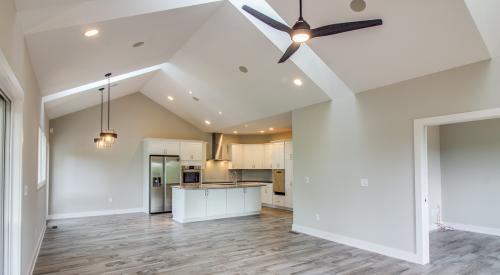A recent survey by The Farnsworth Group pegged the number of builders engaged in remodeling activity at 62 percent, up from 48 percent in 2008. This is not surprising given current new-home market conditions. But having spent the better part of the last seven years connected to the remodeling industry, I know there are vast differences between the remodeling and building businesses, particularly in the target margins it takes to profitably build a new home than, say, a room addition. A builder can get to an 8 or 10 percent net margin on a new-home project with a gross margin of 25 percent, while a remodeler needs a gross margin of 40 percent to get to the same net margin on a room addition project. The reasons for this well-documented phenomenon go beyond the scope of this article, but suffice it to say that added overhead for a lengthy remodeling project necessitates the higher prices. Ask any full-time remodeler and he or she will be happy to explain what is, for many, a hard-learned lesson in pricing.
Now comes a pricing study from global consulting firm McKinsey & Co. that begins to quantify the cost of cutting prices to maintain volume and market share. According to the study of more than 1,200 large and small businesses, very few price cuts yield the increased business volume required to boost profits from one period to the next. The study further shows that even a modest price increase of 1 percent typically yields a growth in earnings of 8 percent, if the volume of business remains stable. That is a pretty big “if” in this housing market, but the underlying truths remain the same. If customers want a product, a modest price increase is rarely noticed. The key is to add perceived value in excess of the proposed increase.
You may be thinking this study might only apply to Pop-Tarts and shoes, but there are lessons to be learned for builders, not only those who are remodeling, but also for those selling new homes. The bigger question is: how do you raise prices on new homes in an environment where home prices may still be falling in some places? The answer depends on each situation, but as consumers scale-back their ambitions for large square-footage homes, there may be an opportunity to sell homes with slightly smaller spaces at slightly higher prices per square foot.
Let’s say you’ve got a popular 2,500-square-foot, 3-bedroom house plan and you trim it to 2,200 square feet while, at the same time, adding energy-efficient features. Is there a way this slightly smaller home can be made to qualify for Energy Star certification, which does not have a fee? The question is worth investigating. The McKinsey study results would seem to argue in favor of adding many of these important but low-cost features in tandem with a modest boost in price per square foot. After all, you might be able to drop the overall price a buyer would have paid for the 2,500 square foot model while earning more for each home you sell.
And for those of you who are temporarily taking remodeling projects, I recommend conducting a very close analysis of the prices you ask. Chances are you will uncover additional costs that would have otherwise put you in the red on a given project. Making money today in building (or remodeling) means giving customers what they want while charging a fair price.
Residential Products Online content is now on probuilder.com! Same great products coverage, now all in one place!










